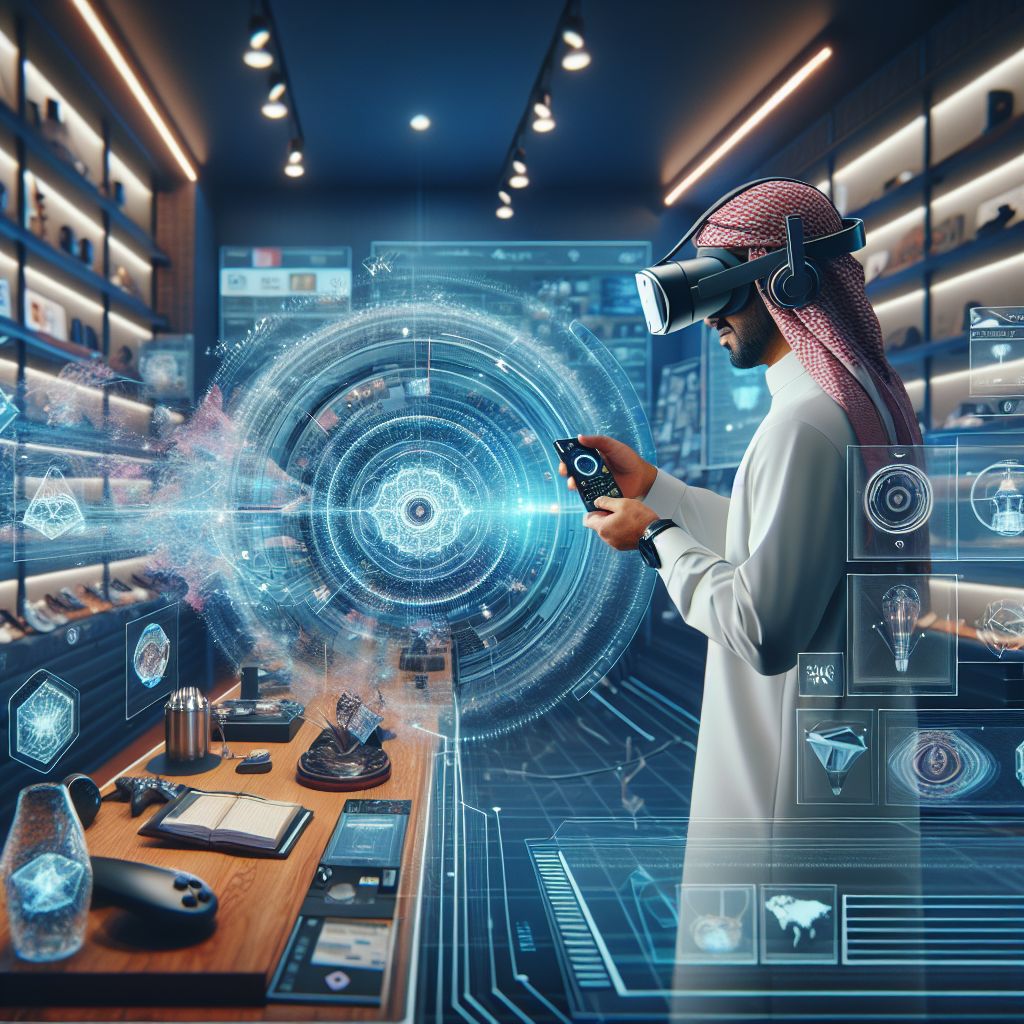Augmented Reality (AR) is changing the way we shop. With the rise of online shopping and the decline of brick-and-mortar stores, retailers are looking for new ways to engage with customers and provide an immersive shopping experience. AR technology has emerged as a powerful tool for retailers to showcase their products in a visually stimulating way, allowing customers to interact with products in real-time before making a purchase. In this article, we will explore how product visualization through AR is revolutionizing the retail industry and unleashing a new era of shopping.
What is Augmented Reality?
Augmented Reality is a technology that overlays digital information onto the real world. Unlike Virtual Reality, which creates a completely immersive digital environment, AR enhances the real world by adding virtual objects or information on top of it. This technology is typically experienced through smartphones, tablets, or wearable devices like smart glasses.
How does AR enhance product visualization in retail?
Product visualization is a key component of the online shopping experience. Without being able to physically touch or try on products, customers rely on images and videos to make purchasing decisions. AR takes product visualization to the next level by allowing customers to see how products would look in their own environment before buying.
For example, furniture retailers can use AR to let customers virtually place a couch or table in their living room to see how it fits with their existing decor. Likewise, fashion retailers can use AR to show customers how an outfit would look on them by superimposing digital clothing onto their image. This level of customization and personalization enhances the shopping experience and increases the likelihood of a purchase.
What are the benefits of using AR for product visualization in retail?
There are numerous benefits of using AR for product visualization in retail. Some of the key advantages include:
– Increased engagement: AR creates a more interactive and immersive shopping experience, keeping customers engaged and interested in the products.
– Higher conversion rates: By allowing customers to visualize products in their own environment, AR reduces uncertainty and increases confidence in purchasing decisions.
– Reduced returns: Customers are less likely to return products when they are able to see how they look and fit before buying.
– Brand differentiation: Retailers that adopt AR technology stand out from competitors and showcase themselves as innovative and customer-centric.
– Data insights: AR can provide valuable data on customer behavior and preferences, allowing retailers to better tailor their offerings and marketing strategies.
Which industries are benefiting from AR product visualization?
While product visualization through AR is being adopted by various industries, some are reaping greater benefits than others. Industries such as furniture, fashion, cosmetics, and home decor have seen significant improvements in customer engagement and sales through the use of AR. Additionally, industries like automotive, travel, and real estate are also leveraging AR for product visualization to provide customers with a more immersive and informative experience.
How can retailers incorporate AR into their business?
Retailers can incorporate AR into their business through a variety of means. They can develop their own AR apps or partner with AR technology providers to integrate AR capabilities into their existing platforms. Additionally, retailers can leverage social media platforms like Instagram or Snapchat to create AR filters that allow customers to virtually try on products or see how they would look in a certain setting.
Retailers can also use AR in physical stores by setting up AR kiosks or displays that allow customers to interact with products in-store. By providing a seamless experience across different channels, retailers can enhance customer engagement and drive sales both online and offline.
In conclusion, AR product visualization is revolutionizing the retail industry by providing customers with a more immersive and personalized shopping experience. By incorporating AR technology into their business, retailers can increase customer engagement, drive conversions, and differentiate themselves from competitors. As AR continues to evolve and become more mainstream, we can expect to see even more innovative applications of this technology in the retail sector.
FAQs
1. Will AR product visualization work on all devices?
AR product visualization works on most smartphones and tablets with AR capabilities. However, older devices or devices without AR functionality may not be compatible with AR technology.
2. How accurate is AR product visualization?
AR product visualization is typically very accurate and provides a realistic representation of products in real-time. However, lighting conditions and the quality of the device’s camera can affect the accuracy of the AR experience.
3. Are there privacy concerns with AR product visualization?
While AR product visualization does not typically raise privacy concerns, retailers should be transparent about how they collect and use customer data through AR technology. Customers should be informed about what data is being collected and how it is being used to enhance their shopping experience.
4. How much does it cost to implement AR product visualization?
The cost of implementing AR product visualization varies depending on the complexity of the project and the technology used. Retailers can work with AR developers and technology providers to determine the best solution for their budget and goals.
5. What are some best practices for using AR product visualization in retail?
Some best practices for using AR product visualization in retail include providing clear instructions for customers on how to use the technology, ensuring a seamless and user-friendly experience, and regularly updating content to keep customers engaged. Retailers should also gather feedback from customers to continuously improve their AR offerings and enhance the shopping experience.
